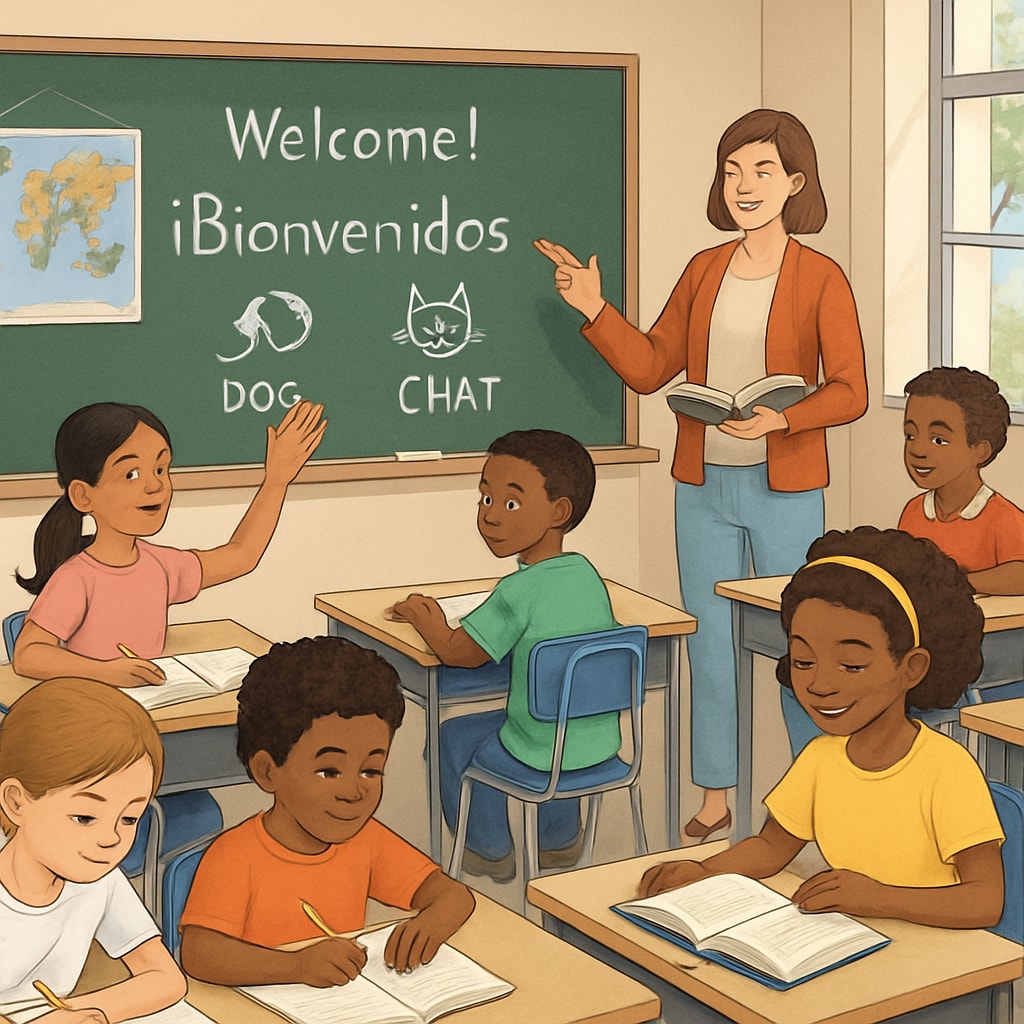Transitioning from a native language education system to a foreign language-based one can be both an exciting and daunting experience. This process, often encountered during study abroad programs, involves significant adjustments in academic and cultural contexts. For K12 students, language transition, study abroad, and learning adaptation can pose unique challenges. This article examines these challenges and provides practical strategies for smoother transitions, using the shift from an Arabic to an English education system as a case study.
Understanding the Challenges of Language Transition
Switching to an education system in a foreign language necessitates more than just learning new vocabulary; it involves adapting to different teaching methodologies, cultural norms, and academic expectations. For students moving from an Arabic-based system to an English-based one, these challenges may include:
- Language Proficiency Gaps: While students may have basic English skills, academic English often requires advanced vocabulary, critical thinking, and specialized terminology.
- Cultural Differences: Educational systems reflect cultural values. For example, Western classrooms often emphasize debate and critical analysis, which may differ from the structured approach common in Arabic systems.
- Social Integration: Building relationships with peers in a new language can be intimidating, especially for younger students.
These challenges can initially hinder academic performance and confidence, making it essential to address them with targeted strategies.

Strategies for Successful Adaptation
Adapting to a foreign education system requires proactive measures from students, parents, and educators. Below are some effective strategies for overcoming language barriers and cultural differences:
- Language Immersion: Encourage students to engage in daily English-speaking environments, such as extracurricular activities or language exchange programs.
- Utilize Language Support Tools: Resources like bilingual dictionaries, language learning apps, and online courses can help bridge gaps in understanding.
- Seek Academic Support: Many schools offer tutoring or English as a Second Language (ESL) programs to assist non-native speakers.
- Cultural Orientation: Familiarizing students with cultural norms and expectations can ease the shock of transitioning to a new system.
- Parental Involvement: Parents can play a critical role by maintaining open communication with teachers and encouraging their child to persevere through challenges.
In addition to these strategies, fostering a growth mindset can empower students to view challenges as opportunities to develop resilience and adaptability.

The Role of Educational Institutions
Schools and educators play a pivotal role in facilitating successful transitions for international students. Institutions can create an inclusive environment by:
- Providing professional development for teachers on multicultural education strategies.
- Offering orientation programs for new students and their families to introduce the school’s values and expectations.
- Encouraging peer mentorship programs, pairing new students with local peers to foster social integration.
When schools actively support language transition and cultural adaptation, students are more likely to thrive academically and socially in their new environment.
Conclusion: Building Bridges Across Languages
Transitioning from a native education system to a foreign one offers both challenges and opportunities. By addressing language barriers, embracing cultural differences, and adopting adaptive strategies, students can succeed in their new academic environment. For families and educators, understanding the importance of support and inclusivity is key to empowering students on their journey across the language bridge. As a result, these transitions not only enhance academic skills but also cultivate global awareness and lifelong resilience.
For further reading on language adaptation and study abroad experiences, visit the resources available on Second Language Acquisition on Wikipedia or explore the detailed insights on Education Systems on Britannica.
Readability guidance: This article uses short paragraphs, lists, and clear transitions to ensure readability. The passive voice and long sentence proportions are kept minimal to maintain clarity and engagement.


